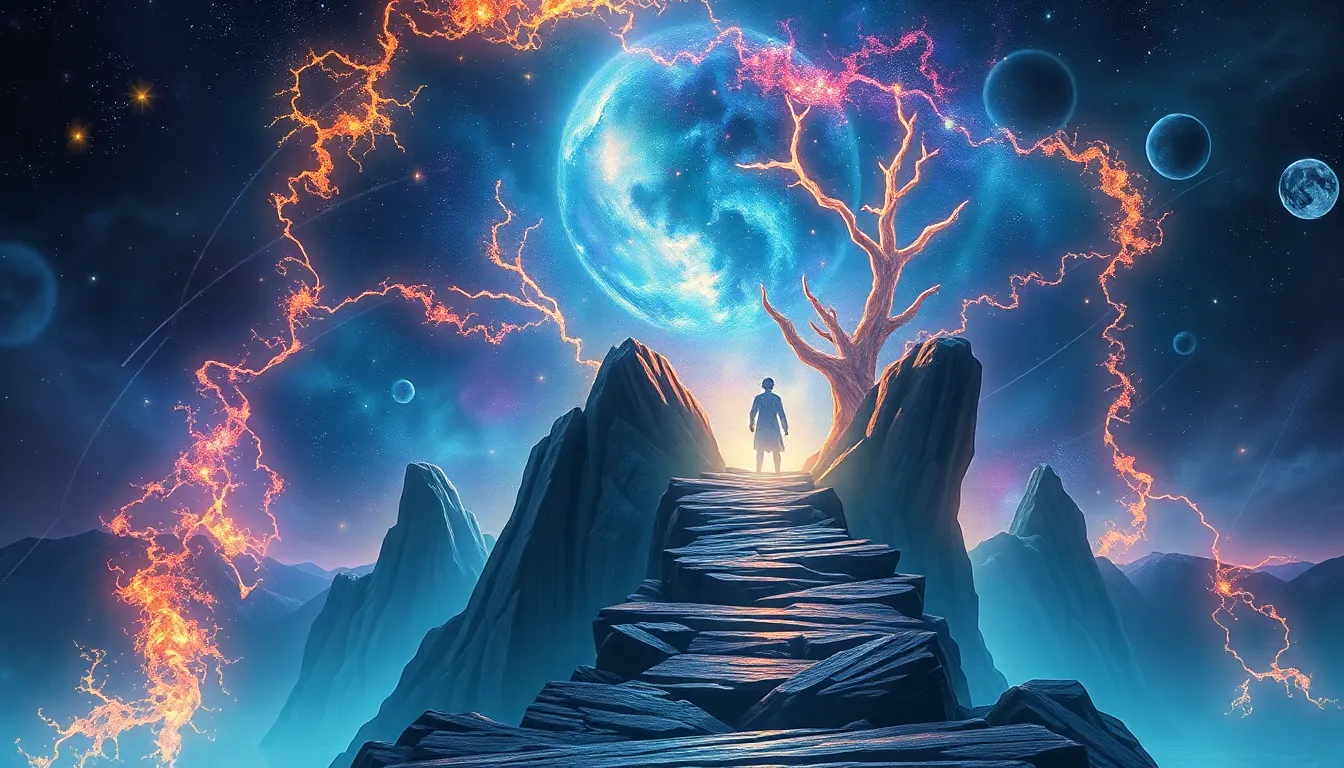Underworld Myths: What Ancient Cultures Believed About Death
I. Introduction
Underworld myths are narratives and beliefs that explain what happens after death and the nature of the afterlife across various cultures. These myths often reflect the values, fears, and hopes of the societies that created them. Understanding these ancient beliefs is crucial as they not only reveal how different civilizations perceived life and death but also highlight the cultural significance of the afterlife in their social structures.
The exploration of underworld myths allows us to see the common threads that weave through human experience, despite the vast differences in geography, language, and time. This article will delve into the beliefs of various civilizations regarding the afterlife, enriching our understanding of humanity’s enduring fascination with death.
II. The Concept of the Underworld in Ancient Cultures
Underworld mythology often shares common themes that resonate across different cultures:
- Duality of Life and Death: The underworld serves as a counterpart to the living world, embodying the mystery of death.
- Judgment and Morality: Many cultures believed in a system of judgment where the deeds of a person’s life determined their fate in the afterlife.
- Deities and Spirits: Various gods and spirits are often associated with the underworld, guiding souls or ruling over the realm of the dead.
The underworld’s role in the afterlife varies across cultures, from a place of punishment to one of reward, and often reflects the values of the society. By comparing these beliefs, we gain insight into the human condition and the universal questions that arise from the inevitability of death.
III. Egyptian Underworld: Duat and the Afterlife Journey
The ancient Egyptians had a rich and complex view of the afterlife, centered around the concept of the Duat. This underworld was not just a place of the dead but a realm filled with dangers and challenges that the deceased had to navigate.
The process of judgment in the Duat involved weighing the heart of the deceased against the feather of Ma’at, the goddess of truth and justice. If the heart was lighter than the feather, the person was deemed worthy and could enter the afterlife, while a heavier heart would lead to destruction.
Key deities associated with the Egyptian underworld include:
- Osiris: The god of the afterlife, who judges the souls.
- Anubis: The god of embalming, who guides souls to the Duat.
- Ma’at: Represents truth and order, essential in the judgment process.
IV. Greek Underworld: Hades and the Realm of the Dead
The Greeks envisioned the underworld as Hades, a dark and shadowy realm ruled by the god Hades. This place was characterized by its distinct regions, including the fields of Elysium, where heroes and the virtuous could enjoy eternal bliss, and Tartarus, a deep abyss for the punishment of the wicked.
Essential to Greek beliefs were figures like Charon, the ferryman who transported souls across the River Styx, and the significance of proper burial rites, which ensured safe passage to the afterlife.
In the Greek concept of the afterlife, there were clear distinctions between punishment and reward:
- Elysium: A paradise for the heroic and virtuous.
- Tartarus: A place of torment for sinners.
V. Mesopotamian Underworld: The Land of No Return
In Mesopotamian mythology, the underworld, known as Kur, was a dreary place where souls went after death. It was governed by the goddess Ereshkigal, who ruled over the dead with a strict hand.
The Mesopotamian underworld was characterized by:
- Stagnation: The dead were thought to lead a shadowy existence, devoid of joy or light.
- Burial Practices: Proper burial was essential, as it was believed that neglecting this could lead to unrest among the spirits.
VI. Norse Underworld: Hel and the Afterlife Journey
The Norse viewed the afterlife as a complex realm divided among several destinations, including Hel, ruled by the goddess Hel, who presided over those who did not die in battle.
For warriors, the afterlife could lead to Valhalla, a hall of the slain, or Folkvangr, ruled by the goddess Freyja.
In Norse beliefs, fate played a significant role in one’s journey after death, with the concept of destiny being paramount in determining a person’s fate in the afterlife.
VII. Native American Views on the Afterlife
Native American beliefs about the afterlife are diverse, reflecting the varied cultures among tribes. Common themes include the Spirit World, a realm where ancestors reside and can influence the living.
Rituals and practices are vital for honoring the dead, which may include:
- Burial Rites: Specific ceremonies to ensure the safe passage of the spirit.
- Spirit Journeys: Beliefs in the journey of the soul to the afterlife.
VIII. Eastern Perspectives: Hinduism and Buddhism
In Hinduism, the cycle of rebirth (samsara) is central, and the underworld known as Naraka is a temporary place of punishment for those who have led sinful lives. Ultimately, the soul aims for moksha, or liberation from the cycle of rebirth.
Buddhism offers a different perspective, focusing on the concepts of death and rebirth, with the bardo being the intermediate state between death and rebirth. Both religions emphasize the importance of karma in determining one’s fate.
IX. Underworld Myths in African Cultures
African cultures boast a rich tapestry of beliefs surrounding death and the afterlife, often centered around ancestor worship. Ancestors are revered, and their spirits are believed to play an active role in the lives of the living.
Notable themes include:
- Connection to Ancestors: Many cultures believe that ancestors provide guidance and protection.
- Myths and Stories: Each region has unique tales that explain the afterlife and the journey of the soul.
X. Conclusion
Through exploring the underworld myths of various cultures, we observe key themes such as morality, judgment, and the significance of the afterlife. These beliefs reveal the universal quest for understanding death and the enduring hope for something beyond it. The relevance of these ancient narratives continues to resonate, providing insights into our own beliefs and attitudes towards mortality.



